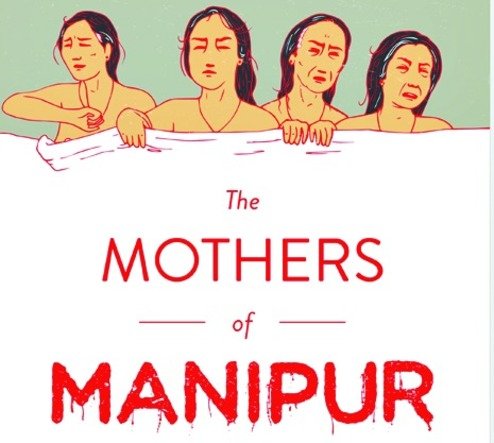July 15, 2004, Imphal (Manipur): An amazing scene unfolds in front of Kangla Fort, the headquarters of the Assam Rifles, a unit of the Indian army. Soldiers and officers watch aghast as twelve women, all in their sixties and seventies, position themselves in front of the gates and then, one by one, strip themselves naked. The imas, the mothers of Manipur, are in a cold fury, protesting the custodial rape and murder, by the army, of Thangjam Manorama, a 32-year-old woman suspected of being a militant. The women hold aloft banners and shout, ‘Indian Army Rape Us’, ‘Take Our Flesh’. Never has this happened before: the army is appalled. Very soon, news of the protest goes viral. People around the country are shocked. Can this be possible? A naked protest in India by mothers?
In The Mothers Of Manipur, journalist Teresa Rehman tells the story of these twelve women, the momentous decision they took, and how they carried it out with precision and care. In doing so she connects the reader to the broader history of conflict-torn Manipur and the courage and resistance of its people, in particular its women.
What was it about that protest which took place in 2004 that continues to resonate to this day, not just in the region where it played out but in the entire country and beyond? The images of Meira Paibis (women torch bearers of Manipur), some of them over 60 years of age, stripping outside the headquarters of the Assam Rifles at the Kangla Fort in Imphal, holds a significant place in the crowded annals of contemporary India. It is important to remember that this incident took place before the advent of platforms like Facebook and Twitter with their capacity to provide instant virality to developments far less tempestuous. Local television channel ISTV, which was present as the 12 women held their banners aloft, had their footage quickly outlawed after a brief airing, as the authorities scrambled to control the consequences of the high voltage demonstration. Yet, given its unprecedented nature, the images did go ‘viral’ in the immediate term and continued to be a major point of reference in the years that followed.
Before we try to answer why this was the case, it may be useful to contextualize this protest. It occurred, first of all, against the backdrop of a fissured, militarized region existing under the shadow of draconian laws. As Sanjay Barbora has pointed out, laws like the Armed Forces (Special Powers) Act, 1958 (AFSPA) and the Disturbed Areas Act may have been promulgated to address the Naga insurgency, but they ended up causing a rash of armed rebellions against the Indian state, ‘If the proliferation of armed rebellion was one side of the peculiar consequences of militarization, the slow but sure erosion of civic values and sensibilities was another.’
Manipur was brought under AFSPA in 1980, but far from restoring peace and a semblance of normalcy, AFSPA only exacerbated insurgent tendencies across the state, underlining the growing alienation of a large swathe of Manipuri society from the country. Among the many flashpoints that took place in Manipur in the post-AFSPA era was the Malom massacre of November 2000 that resulted in the deaths of ten innocents at the hands of the security forces. It led, in turn, to a little known woman called Irom Sharmila, then just 28 years old, embarking upon an extraordinary hunger strike for the revocation of the dreaded law. She later clarified that she undertook that fast, which was to last for 16 years, not on an emotional whim but as a ‘rational being acting on my conscience’.
This hunger strike forms the second framing context. It could be argued that this unprecedented gesture undertaken by Irom Sharmila of turning her body into a weapon of resistance was a precursor to that defiant disrobing in front of the Kangla Fort four years later. If Sharmila had found succour in the firmly bonded matriarchy of the Meira Paibis who had themselves long been organizing against AFSPA, the Meira Paibis, in turn, clearly drew inspiration, while turning their bodies into sites of struggle, from Sharmila’s resolute stance.
Excerpted with permission from The Mothers Of Manipur by Teresa Rehman, Zubaan. You can buy the book here.
Also read: Irom Sharmila, AFSPA And The Quest For Freedom In Manipur
About the author(s)
Feminism In India is an award-winning digital intersectional feminist media organisation to learn, educate and develop a feminist sensibility and unravel the F-word among the youth in India.




